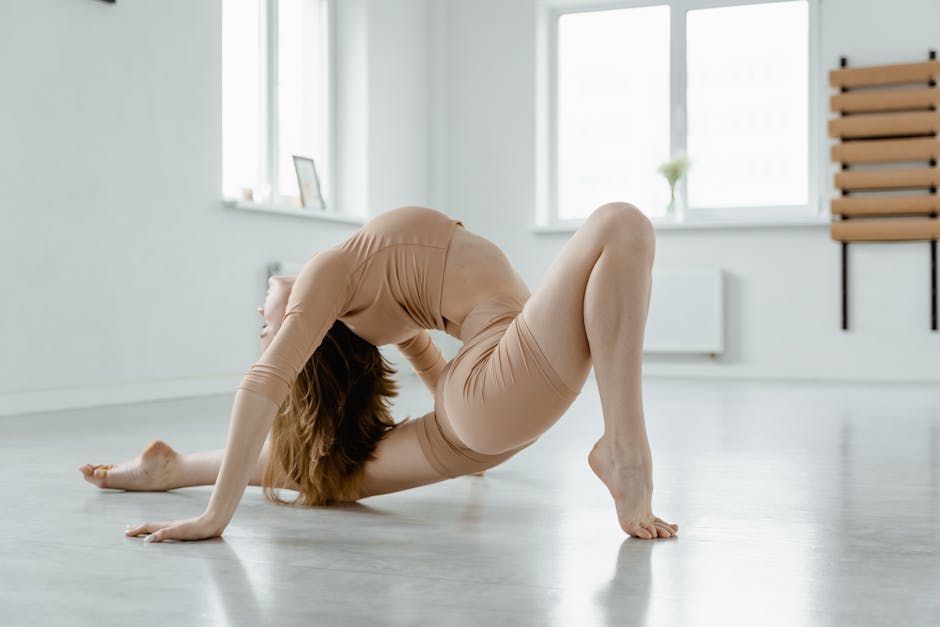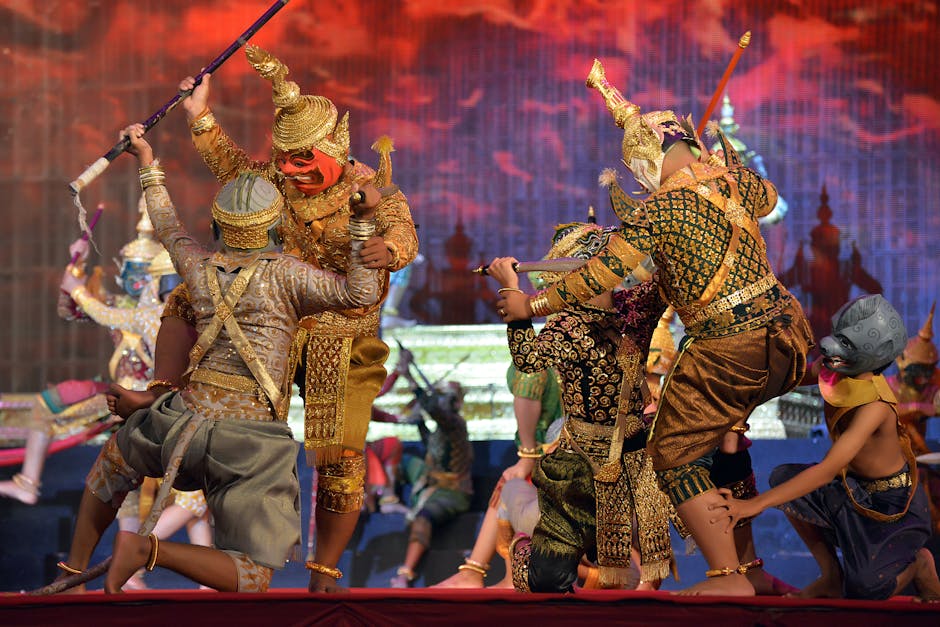Traditional Thai Dance: A Journey Through Grace, Storytelling, and Cultural Heart

Traditional Thai Dance: A Journey Through Grace, Storytelling, and Cultural Heart
Hey there! Let's talk about something truly enchanting – traditional Thai dance. I remember the first time I saw it, I was completely mesmerized. It's so much more than just movement; it's a living storybook, a delicate expression of Thailand's rich culture and history. I want to share what I've learned, hoping to spark the same fascination in you. Come along as we explore the elegance, the stories, and the heart behind each graceful step and gesture.
The Allure of Thai Dance: More Than Just Movement

What makes Thai dance so captivating? It's not just the beautiful costumes or the intricate movements, although those are certainly part of it. It's the way it weaves together music, history, and spirituality into a seamless tapestry of art. Each dance is a narrative, often drawn from classical literature, mythology, or even everyday life. It's like watching a play unfold without words, where every tilt of the head, every flick of the wrist, tells a part of the story. The dancers, with their elegant postures and expressive eyes, become living conduits, channeling the emotions and experiences of characters from long ago.
Think of it like this: imagine a ballet, but instead of relying solely on music and abstract movement, it incorporates a deep understanding of cultural context and a commitment to precise symbolic gestures. That's the essence of Thai dance. It's an art form that demands years of rigorous training and a profound appreciation for the traditions it represents.
A Glimpse into History: Tracing the Roots

The history of Thai dance is as fascinating as the dances themselves. It's believed to have originated in the ancient royal courts, evolving from religious rituals and folk traditions. Over centuries, it developed into a highly refined art form, deeply intertwined with the monarchy and Buddhist beliefs.
Traditionally, Thai dance was performed primarily for the royal court and during religious ceremonies. It was considered a sacred art, and dancers were often members of the royal household or specially trained performers. These dances served not only as entertainment but also as a way to honor the gods, celebrate important events, and reinforce social hierarchies. I remember reading about how the costumes were often made with real gold threads and precious stones, showcasing the immense value placed on these performances.
Different Styles: Exploring the Diverse Landscape

Just like there are different genres of music, Thai dance encompasses a variety of styles, each with its unique characteristics and purposes. Here are a few of the most prominent:
- Khon: Often considered the most classical form, Khon is a masked dance-drama based on the Ramakien, the Thai version of the Hindu epic Ramayana. The dancers wear elaborate costumes and masks that represent specific characters, and the performance involves a combination of dance, music, and narration. The precision of the movements, the power of the music, and the visual spectacle of the costumes make Khon a truly unforgettable experience.
- Lakhon: This style is characterized by graceful, flowing movements and focuses on storytelling through gestures and facial expressions. Lakhon often features female performers and typically portrays scenes from classical literature or mythology. I find Lakhon particularly moving because of the dancers' ability to convey a wide range of emotions without saying a word.
- Fawn: Fawn dances are regional folk dances that reflect the customs and traditions of different parts of Thailand. There are many different types of Fawn, each with its own unique style and music. For example, Fawn Lep, or the fingernail dance, features dancers wearing long, ornate fingernails, while Fawn Tian, or the candle dance, involves dancers holding lit candles. These dances offer a vibrant glimpse into the diverse cultural landscape of Thailand.
The Language of Movement: Deciphering the Gestures

One of the most intriguing aspects of Thai dance is its intricate system of gestures, known as Lakorn. Each hand gesture, or mudra, has a specific meaning and contributes to the narrative of the dance. Learning to understand these gestures is like learning a new language; it allows you to delve deeper into the story being told.
Here are a few examples of common gestures and their meanings:
- Jeeva: This gesture represents life or the soul.
- Sirasa: This gesture signifies the head or respect.
- Ura: This gesture indicates the chest or the heart.
The combination of these gestures, along with facial expressions and body postures, creates a rich and nuanced form of communication. It's a language that transcends words, conveying emotions and ideas in a way that is both beautiful and profound. Watching skilled dancers use these gestures is truly captivating; they seem to effortlessly weave a story with their hands.
The Music of Movement: A Symphony of Sound

The music is an integral part of Thai dance, providing the rhythmic and melodic foundation for the performance. The traditional Thai orchestra, known as the piphat, typically includes instruments such as the ranat ek (xylophone), khong wong yai (gong circle), taphon (drums), and pi nai (oboe). The music is often based on classical Thai melodies and is tailored to the specific dance being performed. It's not just background noise; it actively contributes to the narrative, setting the mood and emphasizing key moments in the story.
I've noticed that the music can change dramatically depending on the style of dance. For example, Khon performances often feature dramatic and powerful music, while Lakhon dances tend to be accompanied by softer and more melodic tunes. The interplay between the music and the dance is truly mesmerizing; they complement each other perfectly, creating a harmonious and immersive experience.
Costumes and Adornments: A Visual Feast

The costumes worn by Thai dancers are nothing short of spectacular. They are often adorned with intricate embroidery, shimmering sequins, and elaborate headdresses. Each costume is carefully designed to reflect the character being portrayed and the style of dance being performed. The vibrant colors, the luxurious fabrics, and the meticulous attention to detail make the costumes a visual feast for the eyes.
For Khon performances, the dancers wear elaborate masks that represent different characters from the Ramakien. These masks are often made of papier-mâché and are painted with intricate designs. They are not just decorative; they also help to convey the personality and characteristics of the characters. I always find myself drawn to the details of these masks, trying to decipher the emotions they express.
The Training and Dedication: A Lifelong Commitment

Becoming a skilled Thai dancer requires years of rigorous training and unwavering dedication. Dancers typically begin their training at a young age and spend countless hours perfecting their technique. The training involves not only learning the steps and gestures but also studying the history, culture, and mythology associated with the dances.
I've read that the training is incredibly demanding, requiring immense physical and mental discipline. Dancers must develop exceptional flexibility, strength, and stamina. They also need to cultivate a deep understanding of the music and the cultural context of the dances. It's a lifelong commitment, and the rewards are not always tangible. But for those who are passionate about Thai dance, the opportunity to preserve and share this beautiful art form is reward enough.
Experiencing Thai Dance: Where to See It

If you're interested in experiencing Thai dance for yourself, there are several places where you can see performances. In Thailand, you can find traditional dance performances at cultural centers, temples, and even some hotels. Some venues offer dinner and a show, allowing you to enjoy a delicious Thai meal while watching the dancers perform. I strongly recommend seeking out an authentic performance if you ever have the opportunity to visit Thailand. The atmosphere, the energy, and the artistry are truly unforgettable.
Even outside of Thailand, you can often find Thai dance performances at cultural festivals, museums, and universities. Keep an eye out for touring dance companies or local Thai cultural organizations that may be hosting performances in your area. And of course, you can always explore videos of Thai dance online. While it's not quite the same as seeing it in person, it's a great way to learn more about the art form and appreciate its beauty.
Preserving the Legacy: The Importance of Continuing Traditions

In today's rapidly changing world, it's more important than ever to preserve traditional art forms like Thai dance. These dances are not just relics of the past; they are living expressions of cultural identity and heritage. By supporting Thai dance, we help to ensure that these traditions will continue to thrive for generations to come. It's about honoring the dedication of the dancers, the artistry of the musicians, and the wisdom of the ancestors who created these beautiful dances.
I believe that Thai dance has something to offer everyone. Whether you're drawn to its elegance, its storytelling, or its cultural significance, it's an art form that can enrich your life in countless ways. So, take the time to explore the world of Thai dance. You might just discover a newfound appreciation for beauty, history, and the power of human expression. And who knows, maybe you'll be as captivated as I was the first time I witnessed its magic!
Post a Comment